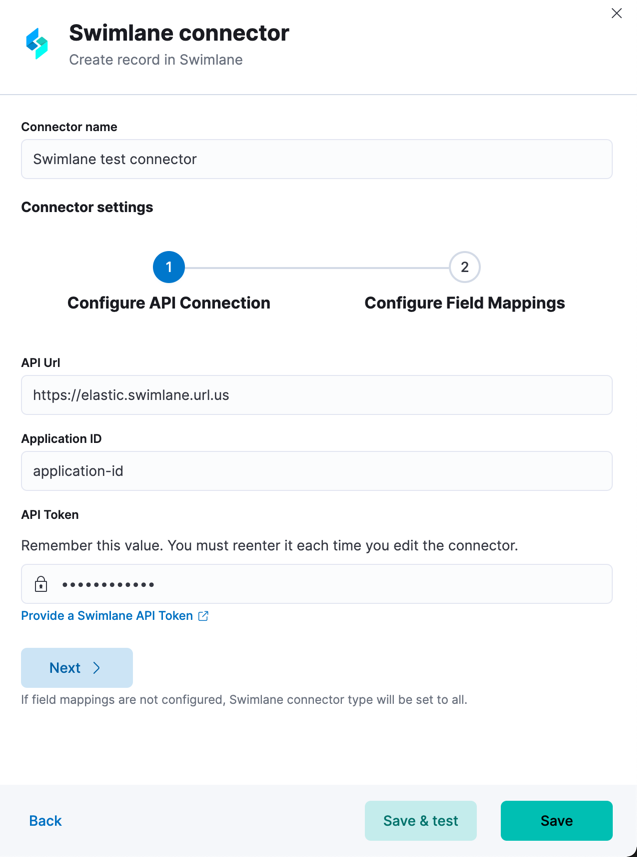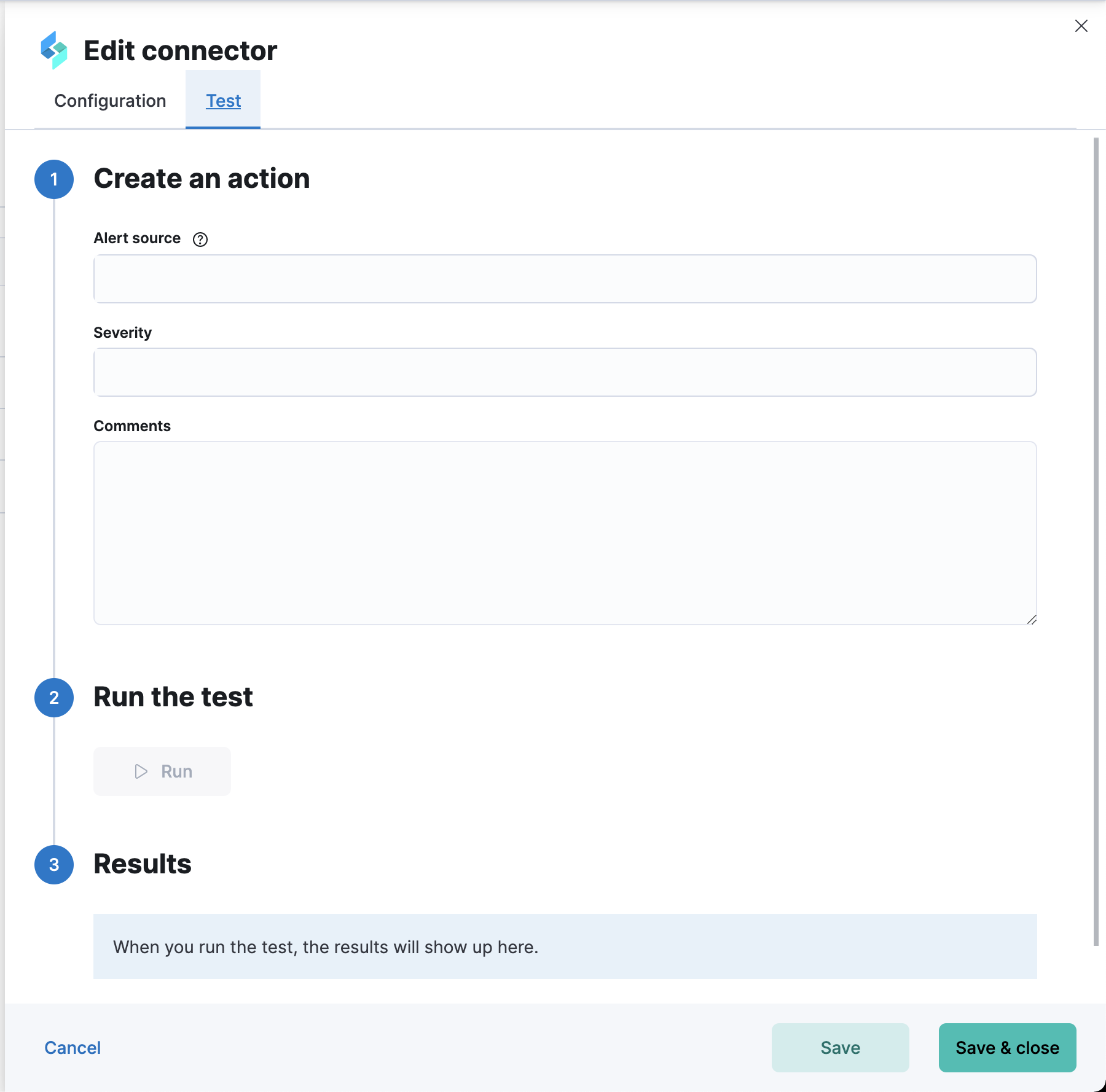Swimlane connector and action
editSwimlane connector and action
editThe Swimlane connector uses the Swimlane REST API to create Swimlane records.
Create connectors in Kibana
editYou can create connectors in Stack Management > Connectors or as needed when you’re creating a rule. For example:

Connector configuration
editSwimlane connectors have the following configuration properties:
- Name
- The name of the connector.
- URL
- Swimlane instance URL.
- Application ID
- Swimlane application ID.
- API token
- Swimlane API authentication token for HTTP Basic authentication.
Create preconfigured connectors
editIf you are running Kibana on-prem, you can define connectors by
adding xpack.actions.preconfigured settings to your kibana.yml file.
For example:
xpack.actions.preconfigured:
my-swimlane:
name: preconfigured-swimlane-connector-type
actionTypeId: .swimlane
config:
apiUrl: https://elastic.swimlaneurl.us
appId: app-id
mappings:
alertIdConfig:
fieldType: text
id: agp4s
key: alert-id
name: Alert ID
caseIdConfig:
fieldType: text
id: ae1mi
key: case-id
name: Case ID
caseNameConfig:
fieldType: text
id: anxnr
key: case-name
name: Case Name
commentsConfig:
fieldType: comments
id: au18d
key: comments
name: Comments
descriptionConfig:
fieldType: text
id: ae1gd
key: description
name: Description
ruleNameConfig:
fieldType: text
id: avfsl
key: rule-name
name: Rule Name
severityConfig:
fieldType: text
id: a71ik
key: severity
name: severity
secrets:
apiToken: tokenkeystorevalue
Config defines information for the connector type.
-
apiUrl - An address that corresponds to URL.
-
appId - A key that corresponds to Application ID.
Secrets defines sensitive information for the connector type.
-
apiToken - A string that corresponds to API Token. Should be stored in the Kibana keystore.
Test connectors
editYou can test connectors with the run connector API or as you’re creating or editing the connector in Kibana. For example:

Swimlane actions have the following configuration properties.
- Comments
- Additional information for the client, such as how to troubleshoot the issue.
- Severity
- The severity of the incident.
Alert ID and Rule Name are filled automatically. Specifically, Alert ID is set to {{alert.id}} and Rule Name to {{rule.name}}.